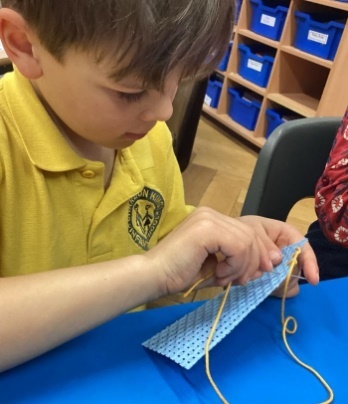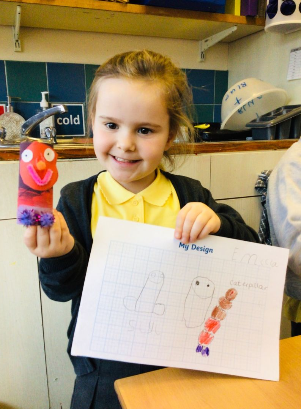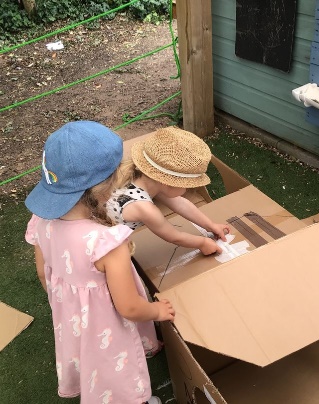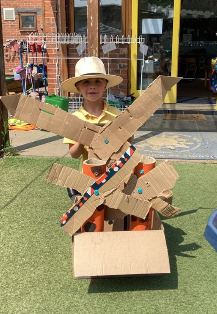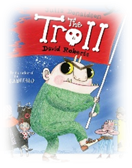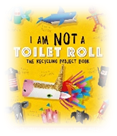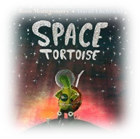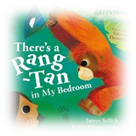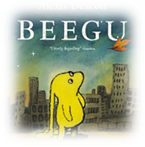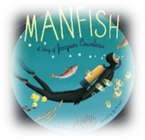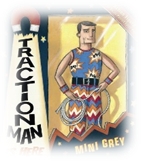Design Technology at CKIS
Our vision for DT at CKIS
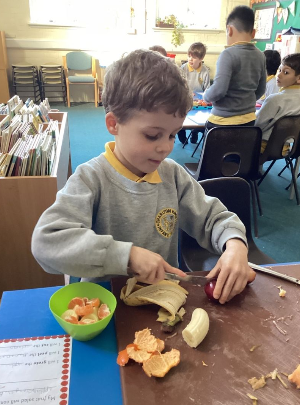
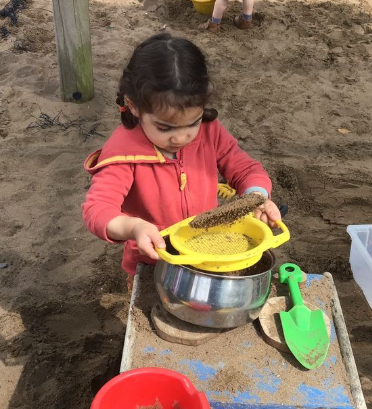
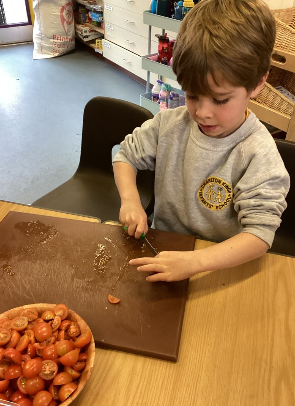
“At CKIS we want to engage, inspire and challenge pupils, equipping them with the knowledge and skills to experiment, invent and create. We want our children to have the confidence to design, make and evaluate what has worked with their creation and to be equipped with skills they can apply independently to everyday life.”
Purpose and aims of DT (Intent statement)
Our curriculum provides a broad range of experiences for our pupils: Our pupils’ backgrounds, our culture and our climate for learning provide the following drivers that underpin ALL areas of our DT curriculum:
- Learning to learn - which helps pupils to concentrate and focus and build resilience as learners
Constructing allows children to work together, developing their teamwork skills and resilience. This will support them in being better learners across the curriculum. It also provides them with the opportunity to be outdoors, supporting concentration when in the classroom. Our DT curriculum focuses on the knowledge and skills that children are able to apply to everyday life, such as using cutlery correctly, food safety and how to cut and join different materials.
- Culture and Diversity - which helps pupils to develop enquiring minds about the wider world
Designers and architects from different countries, genders and periods of time are focused on within DT and are used to inspire children’s creations.
- Environment and Community - which helps to instil in our pupils a respect for our environment and for our local and wider communities
Children are taught how to use different materials without creating waste and damage for the environment. Recycled materials are also reused within DT and children regularly use old boxes and junk modelling within construction, particularly in KS1 with the use of the ‘makedo’ tools.
– Creative arts and physical development - which helps our pupils to express themselves and excel as holistic learners
Our DT curriculum encourages children to think in different ways and allows them to present their knowledge in a new and exciting way. They can take ideas from designers and architects, or each other, to design, make and evaluate their own work. The children are able to work on a large and small scale within DT, moving from stacking objects to make them balance, to joining them together carefully with screws from the ‘makedo’ too. DT therefore develops children’s fine and gross motor skills.
We offer a thoughtful range of experiences that support our culture: pupils enjoy a ‘full spectrum’ of academic, physical, spiritual, moral, social, cultural activities that enrich their lives. We aim to ensure that all children have the confidence and skills to develop as resilient life-long learners.
Our curriculum has been developed over time through:
- Analysing the strengths and weakness of our previous curriculum
- Considering how the National Curriculum aims and the Early Years Goals are being met across the school
- Being active participants in the CLP Subject Leader Network meetings
- Accessing subject specific CPD and using this to inform our curriculum design
We aim for all pupils to:
- Gain an understanding of the DT subject knowledge (see termly schemes of work) so that they develop conceptual understanding and the ability to recall and apply knowledge accurately
- Understand the subject specific vocabulary and use it independently within their learning
- Develop specific skills, such as cutting, joining, designing and evaluating, allowing them to use them independently in the provision (Challenge Time)
- Be inspired by a range of designers and architects, and begin to understand how to create work using their techniques and style
- Have the knowledge, skills and confidence to express their creativity
The teaching of DT at CKIS (Implementation)
The DT curriculum is carefully and coherently sequenced to enable our children to develop growing knowledge and skills.
The Schemes of Work outline the specific knowledge that we expect our children to know and understand by the end of each term in every year group. The key learning directly matches the National Curriculum and the Early Years Framework, and additional learning that we believe is essential for our children to know.
The Learning Leaves are used to share what we will be learning about with the parents in each term. As well as stating the key knowledge we will be teaching the children, the Learning Leaves also features key vocabulary and definitions, as well as further learning opportunities.
With the support of the subject leads, the year group teams create medium term plans from the schemes of work. Staff build upon the prior learning when putting together lesson by lesson plans, with each unit starting with a ‘lesson 0’ to elicit and assess prior knowledge. The medium term plans are working documents that are adapted to cater to individual and cohort needs.
At CKIS every child is recognised as a unique individual. We celebrate and welcome differences within our diverse school community, encouraging all to grow and flourish. Learning is centred around experiencing the joy of discovery.
The ability to learn is underpinned by the teaching of basic skills, knowledge, concepts and values, with a vision to prepare our children to be life-long learners, rooted in our school motto: The wings to fly, the confidence to try.
DT in our Foundation Stage is covered in the ‘Expressive Arts and Design’ area of the EYFS Curriculum. It is introduced indirectly through activities that encourage every child to explore different mediums and their creativity. In Reception, the children are taught the key knowledge during a whole class direct teach, either weekly or fortnightly. They have opportunities to explore balancing, constructing throughout the provision and access to resources to support them.
During their first years at school our children will develop their gross and fine motor skills, stacking objects to balance and selecting and using the correct tools. They begin to plan their creations and consider what went well.
KS1 pupils should develop fundamental skills and knowledge, and become increasingly independent in order to explore their creativity and apply their knowledge. DT is taught as a block in KS1 to ensure children have enough time to produce work to a high standard and to develop a deep understanding. This is where they demonstrate their new knowledge and skills, which are the children’s ‘expected outcomes’.
During Challenge Time, all KS1 pupils can ‘be an designer’ and have access to opportunities to design, make and evaluate their own creations. Children in KS1 also have access to the ‘makedo’ tools, allowing them to use different tools to cut and join cardboard together.
The Design and Technology programme of study (for KS1) is divided into 4 main areas:
Design Pupils design purposeful, functional, appealing products for themselves and other users based on design criteria that are fit for purpose and aimed at particular groups or individuals. Pupils generate, develop model and communicate their ideas through discussions.
Make Pupils select from and use a range of tools and equipment to perform practical tasks. They select from and use a wide range of materials and components, including construction materials, textiles and ingredients, according to their characteristics and functional properties.
Evaluate Pupils explore, evaluate, investigate, and analyse a range of existing products. They evaluate their ideas and products again design criteria and consider the views of others to improve their work.
Technical knowledge Pupils build structures, explore how they can be made stronger and apply their understanding of how to strengthen, stiffen and reinforce structures. They explore and use mechanical systems in their products.
We ensure the children are ready for the KS2 curriculum by conducting regular meetings with the subject leaders at Charlton Kings Junior School. This ensures we have a clear understanding of the progression in DT from KS1 to KS2.
Oracy in DT
Oracy forms an important part of our DT curriculum. Children are taught subject specific vocabulary, which is modelled and reinforced by adults in the class rooms as well as being displayed. During taught sessions and independent challenge time, children are encouraged to use class sentence stems to engage in discussion, following our class discussion guidelines.
Key vocabulary and texts for each year group
|
Year Group |
Texts |
Vocabulary |
|
|
Kindergarten |
|
Move Build Cut Imagination Pretend |
|
|
Reception |
|
Build Stack Pretend Plan Construction Float Sink |
Join Tools Texture Materials |
|
Year 1 |
|
Build Tools Evaluate Telescope Design Stirring Kneading Pouring |
Recycling Roll Coil Plan Dyeing Buoyant Running stitch |
|
Year 2 |
|
Design Materials Tools Join Evaluate Dyeing Cut Peel Grate Fruit Vegetable |
Printing Ingredients Stirring Kneading Running stitch Blanket stitch Template |
Demonstrating learning
In DT, pupils demonstrate their learning in the following ways:
The pupils demonstrate their understanding through enrichment tasks in the continuous provision. These are observed and could be recorded using Seesaw, examples of children's work in their special books and through cross curricular evidence.
Teachers carefully plan and monitor progress and adapt medium term plans to include key questions and checkpoints for children to demonstrate understanding in age-appropriate ways.
Examples from Seesaw:

The children’s learning can be recorded on Seesaw and shared with parents. This gives families the opportunity to continue learning at home and further develop their knowledge and skills.
Special books:
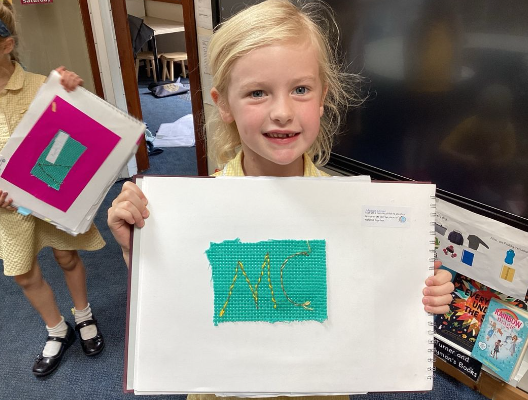
The children keep their ‘gold standard’ work in their special books. This can be the ‘expected outcomes’ they have completed or examples of where they have independently furthered their learning in the provision.
Meeting the needs of all pupils (inclusion)
Our school supports the principle that young children learn through play, and through well planned structured opportunities that are relevant, engaging and promote deep level thinking and learning.
Teaching through both a rich continuous provision, paired work, small group and whole class learning opportunities skilfully builds upon the experiences of the child and promotes their next steps as a learner.
Teachers and Teaching Partners competently provide a balance of structured cross curricula learning activities and child-initiated opportunities through high quality indoor and outdoor learning environments.
In this way we aim to ensure that children are actively involved in their learning and deepen their knowledge, skills and understanding becoming masters of their learning as:
• Problem solvers
• Resilient learners
• Collaborative thinkers
• Inspired questioners
All pupils are entitled to a broad and balanced curriculum that meets their needs.
DT is taught in class groups, and accessible in our provision with all pupils included.
All our teachers know the pupils in their class and their differing needs well. They plan and adapt lessons to help all pupils know and remember more so they make very good progress.
Some pupils, including those with special educational needs or disabilities, or those with English an as additional language, may need extra support to access, understand and remember key concepts.
For these pupils, teachers use a range of effective strategies, whilst promoting independent learning as far as possible. These may include:
● adapting and scaffolding pupil activities and resources
● focussed additional support from an adult in class
● extra pre learning or overlearning of key knowledge before or after the lesson
Some pupils very quickly grasp the main concepts being taught and are able to think more deeply to extend their learning. To ensure they reach their full potential, teachers may:
● set more complex activities that require thinking at greater depth
● ask pupils to apply their knowledge to a different situation
● go further by asking them to explain their thinking to others
Assessment (Impact)
Formative Assessment
At CKIS teachers constantly assess how far their pupils understand key concepts throughout lessons, mainly through questioning and observation. Quizzes and other games are regularly used to assess how far pupils have remembered learning from the lessons before. Teachers then adapt their teaching to ensure misconceptions or gaps in knowledge are addressed. In addition, they may need to introduce opportunities for more challenge or deeper thinking. Regular reviews of the medium term plans take place to ensure that they are setting the correct level of challenge and opportunities for our children.
End of unit Assessment
Key assessment criteria are written into our school curriculum and medium-term plans.
Assessments of children's learning are made and assessed through observations and classwork and shared as evidence on SeeSaw. These assessments contribute to a summative judgement at the end of each term against the DT statements supplied by the DT lead and found on INSIGHT.
Teachers and subject leads monitor children’s progress and attainment throughout the year to inform ongoing teaching and learning.
This is carried out through book looks, observations and using the data on INSIGHT. Teachers and subject leads ensure that they assess a balance of the disciplinary and substansive knowledge, outlined in each term’s Schemes of Work.
Reporting to families and statutory assessment
The children’s progress across the curriculum is shared with families during parents evening appointments and their learning is shared through observations on Seesaw throughout the year. At the end of every year, families receive a report which comments on the children’s strengths across the curriculum and areas for improvement. The teachers make judgements for each child’s attainment and progress in every subject, which is included in the report.
Monitoring and Evaluation
The subject leader for DT monitors the quality of education regularly in accordance with the school’s monitoring timetable. This may take the form of:
● learning walks and drop ins, usually with a member of the senior leadership team, and sometimes with a governor.
● book looks. The subject leader looks at a range of books or other evidence across the school, sometimes with senior leaders or an adviser or governor.
● scrutiny of planning, particularly to evaluate coverage and progression within the curriculum as well as the extent to which planning is catering for the range of needs of pupils.
● pupil conferencing.
● surveys for pupils and/ or staff.
● lesson observations.
Subject leaders have regular support from the senior leadership team where aspects of the subject policy and action plan are monitored and discussed. Action plans are reviewed and shared with the staff three times a year to ensure all staff are aware of key actions.
Resulting actions may emerge with additional leadership support, resources or policy changes implemented.
Subject leaders routinely have a teacher appraisal objective linked to an aspect of their subject leadership. Following all these activities, strengths and areas for development are reported and discussed with staff. Resulting actions are recorded on the subject action plan and reported to governors.
At the end of each year the action plan for DT is fully evaluated. In addition, the subject leader evaluates how far DT is meeting our curriculum intent statement. This evaluation feeds into the action plan for the following year. Evaluated action plans and evaluations are reported to the senior leadership team and governors.
The role of the governors
Every subject has a specific governor allocated to it. The governor for DT is Amy Coole.
This governor evaluates the activities within this aspect and the impact on the quality of education and pupil outcomes.
They meet with subject leaders and review aspects of the subject, including seeing lessons in practice and talking to children.
Their findings are reported to the Governing Board. In this way, leaders are held accountable for the aspects they are responsible for, and subject leaders are able to access the appropriate support and resources to achieve their aims.

